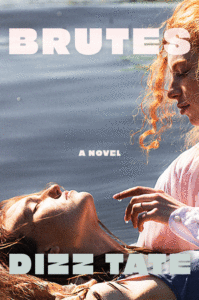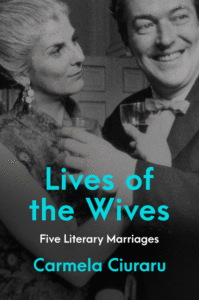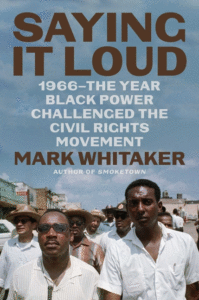
Mariana Enriquez’s Our Share of Night, Thomas Mallon’s Up With the Sun, and Mark Whitaker’s Saying It Loud all feature among the Best Reviewed Books of the Week.
1. Our Share of Night by Mariana Enriquez
(Hogarth)
7 Rave • 3 Positive • 1 Mixed • 1 Pan
“An ambitious horror epic … The concept of a rich and powerful demonic cult has been well trod in books and films, and yet the breadth of the world Enríquez creates through a perversity of detail is astounding … Complicity is a recurring theme in the novel, and though there are characters who have a clearer sense of right and wrong, there are no heroes. Just about everyone is guilty, whether by abetting cruelty or ignoring it. Our Share of Night is ambitious because it is not only an immersive horror story but also an expansive family history that works to illustrate years of actual exploitation and repression in Argentina … Unsettling and tragic, poignant and true, Our Share of Night is a masterwork from a writer with an unflinching gaze. If you can manage to hold that gaze with her, you will be richly rewarded.”
–Elizabeth Gonzalez James (The Los Angeles Review of Books)
2. Up With the Sun by Thomas Mallon
(Knopf)
5 Rave • 2 Positive • 1 Pan
“Much of the fun in Up With the Sun comes from Mallon’s treatment of the parade of showbiz players that cross paths with Kallman … Up With the Sun has its cake and eats it, too. It’s an ode to the more poisonous elements of show business that it also manages to bask in the ridiculousness of it all. You won’t like Dick Kallman. But good luck taking your eyes off him.”
–Chris Vognar (The Boston Globe)

3. Brutes by Dizz Tate
(Catapult)
1 Rave • 6 Positive • 3 Mixed
Read an excerpt from Brutes here
“This isn’t a book primarily concerned with finding Sammy. Instead, Tate sidesteps the missing girl trope and makes the far more compelling choice to focus her lens on a pack of 13-year-old girls who are used to blending into the background … In plunging the reader into the girls’ collective perspective, Brutes makes for an original and stylistically ambitious take on the well-trodden subject matter of girls in peril … Tate perfectly captures the simultaneous impatience and mercurial swings of girlhood … Fast-forwards ominously color the action of the novel’s present … Tate adds depth and welcome weirdness to what might have been a more ordinary nightmare.”
–Kristen Martin (NPR)
**

1. Lives of the Wives: Five Literary Marriages by Carmela Ciuraru
(Harper)
4 Rave • 3 Positive
Listen to an interview with Carmela Ciuraru here
“Ms. Ciuraru is intensely interested in the vicissitudes of relationships over time … Refreshingly, Ms. Ciuraru has chosen to ‘steer clear of the all-star wifely roster’—Zelda Fitzgerald, Véra Nabokov, Nora Barnacle, Sofia Tolstoy, plus Hemingway’s four wives, Bellow’s five and Mailer’s six. Instead, she has handpicked five accomplished duos whose stories are less widely familiar … Amid the sometimes disheartening marital warfare, there are plenty of pleasant benefits in this deeply researched book, including enticing descriptions of forgotten literary gems … It should be noted that Ms. Ciuraru’s compulsively readable book examines these unions from a 21st-century vantage point.”
–Heller McAlpin (The Wall Street Journal)
2. Love and Let Die: James Bond, the Beatles, and the British Psyche by John Higgs
(Pegasus Books)
6 Positive • 3 Mixed
“John Higgs offers a rambling and often brilliant meander through the British male psyche … In pairing these pop-cultural phenomena, Mr. Higgs… is onto something. It is unfortunate that his ingenuities do not extend to musical analysis … All things must pass, but Bond cannot die and the Beatles’ music still plays. Both franchises will pump out the product for eternity. This book is an excellent and oddly illuminating way to pass the time between installments.”
–Dominic Green (The Wall Street Journal)

3. Saying It Loud: 1966—The Year Black Power Challenged the Civil Rights Movement by Mark Whitaker
(Simon & Schuster)
4 Rave • 1 Positive
“Excellent … Offers fresh interpretations of key moments of activism during 1966 based on interviews and memoirs published over the past four decades. Without sacrificing historical rigor, he writes with the eye of a journalist and ear of a poet about the behind-the-scenes negotiations and inner-organizational strife among Civil Rights activists who realized the need to broaden the movement beyond the southern campaign for voting rights and desegregation … A refreshing history.”
–Ousmane Power-Greene (The Boston Globe)

